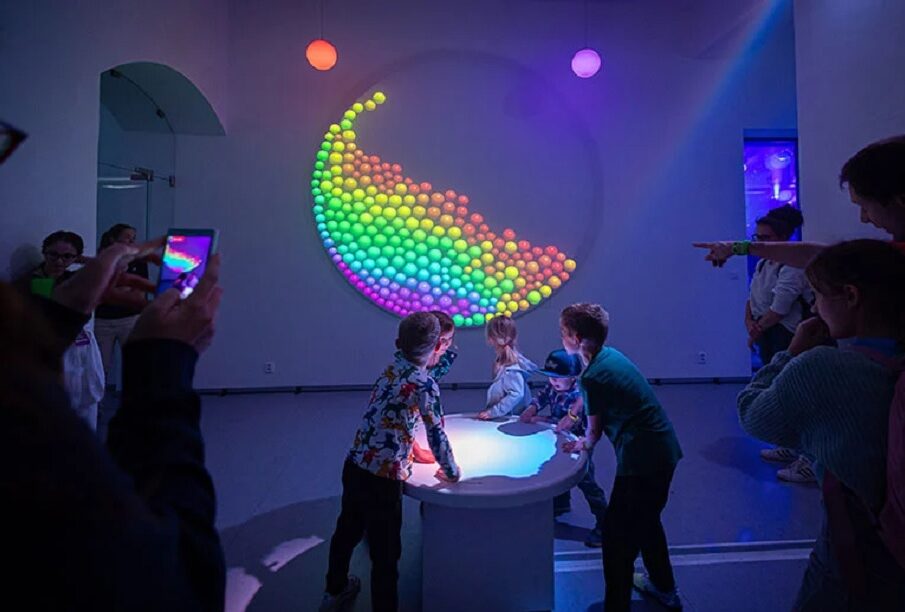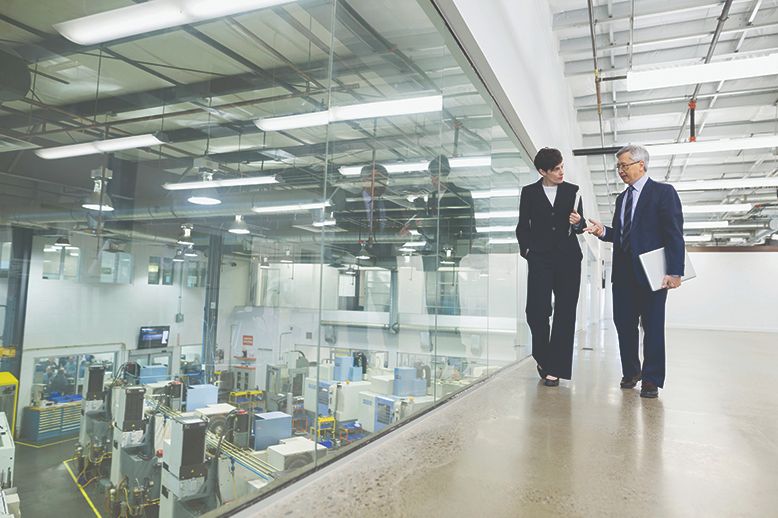The Art of Video Mapping: Transforming Spaces with Digital Illusions

- The Evolution of Video Mapping
Video mapping, also known as projection mapping, is a technique that has revolutionized the world of art and design. This impressive visual art form allows artists to transform static objects, such as buildings or sculptures, into dynamic displays using projected images and videos. The evolution of video mapping can be traced back to the early 1960s when artists and researchers began experimenting with projections on three-dimensional surfaces.
1.1 The History of Video Mapping
The origins of video mapping can be attributed to the emergence of multimedia art in the 1960s. Artists like Nam June Paik and Steina and Woody Vasulka started exploring the idea of projecting images onto various surfaces. However, the true breakthrough came in the early 2000s when advanced computer software and hardware became widely available.
With the development of powerful projectors and mapping software, artists were able to create intricate and immersive visual experiences. This opened up a whole new world of possibilities for creative expression and transformed video mapping into a prominent art form.
1.2 From Projection Mapping to Video Mapping: Understanding the Difference
While projection mapping and video mapping are often used interchangeably, there is a subtle difference between the two. Projection mapping refers to the technique of projecting images onto three-dimensional objects, creating the illusion of movement and depth. On the other hand, video mapping involves not only projecting images but also integrating them with videos and animations.
Video mapping takes projection mapping to the next level by adding a dynamic element to the visuals. This allows artists to create interactive and immersive experiences that captivate audiences and transform spaces.
1.3 The Impact of Video Mapping on Art and Design
Video mapping has had a significant impact on the world of art and design. It has blurred the lines between digital and physical spaces, allowing artists to transcend traditional artistic boundaries. The ability to transform any surface into a canvas for artistic expression has opened up endless possibilities for creativity.
Architectural video mapping, in particular, has become a powerful tool for transforming urban environments. By projecting images and videos onto buildings, artists can create astonishing light displays that bring architecture to life. This has not only redefined the way we experience public spaces but also sparked a new wave of creative possibilities for architects and urban planners.
- The Tools and Techniques of Video Mapping
To create stunning video mapping installations, artists rely on a combination of hardware and software tools. Understanding the different components and techniques involved is crucial for ensuring a successful video mapping project.
2.1 Projectors: Choosing the Right Device for Video Mapping
The choice of projector plays a vital role in the quality and impact of a video mapping installation. High-brightness projectors with excellent color accuracy are preferred for outdoor video mapping, as they can overcome ambient lighting conditions and produce vibrant visuals.
When selecting a projector for indoor video mapping, factors such as projection distance, resolution, and throw ratio should be taken into consideration. It’s essential to choose a projector that matches the specific requirements of the installation space to achieve optimal image quality.
2.2 Software for Video Mapping: Exploring the Best Options
Video mapping software is an essential tool for artists to create and manipulate visuals for their installations. There are several software options available, each offering unique features and capabilities.
Resolume Arena is a popular choice among video mapping artists for its real-time performance and intuitive interface. It allows artists to mix and match videos, images, and effects seamlessly. MadMapper is another widely used software that provides advanced mapping capabilities, including deformations and 3D object alignment.
2.3 Mapping Techniques: Tips and Tricks for Creating Stunning Visuals
Creating impressive video mapping installations requires mastery of various mapping techniques. Here are some tips and tricks to enhance the visual impact:
- Object Calibration: Precisely aligning the projected images with the physical object is crucial for a seamless visual experience. Using techniques like geometric correction and edge blending can help achieve accurate calibration.
- Content Creation: Crafting engaging and visually appealing content is essential for successful video mapping. Experimenting with different media, such as animations, still images, and live video feeds, can add depth and intrigue to the installation.
- Interaction Design: Incorporating interactive elements into the video mapping installation can enhance audience engagement. This can be achieved through sensors, motion tracking, or even audience participation via mobile devices.
- Creative Applications of Video Mapping
Video mapping has expanded beyond the realms of art galleries and exhibitions and found its way into various industries and creative fields. Its versatility and ability to captivate audiences make it an ideal medium for advertising, live performances, and artistic expression.
3.1 Video Mapping in Advertising and Marketing
Advertising and marketing campaigns have embraced video mapping as a powerful tool for creating memorable brand experiences. Video mapping allows brands to transform ordinary objects, such as product packaging or storefronts, into immersive and engaging displays.
Video mapping in advertising provides a unique opportunity for brands to stand out and leave a lasting impression on consumers. With carefully crafted visuals that align with brand messaging, video mapping can create a wow factor that traditional advertising mediums often lack.
3.2 Video Mapping in Live Performances and Events
Video mapping has become a staple in live performances and events, adding an extra layer of spectacle and visual stimulation. From concerts and music festivals to theatrical productions and dance performances, video mapping has found its place in the world of entertainment.
By integrating video mapping with live performances, artists can enhance the storytelling aspect and create immersive experiences for the audience. The synchronized visuals and music create a multisensory journey that transcends traditional stage setups.
3.3 Video Mapping as an Artistic Medium: Showcasing Contemporary Artists
Video mapping has transformed the way contemporary artists express themselves, pushing the boundaries of traditional art forms. Artists around the world are using video mapping to create thought-provoking installations that explore complex themes and engage viewers in new ways.
Video mapping installations have been featured in prestigious art galleries and museums, showcasing the versatility of the medium. From large-scale outdoor projections to intimate gallery displays, artists are harnessing the power of video mapping to create unforgettable artistic experiences.
- The Future of Video Mapping
The world of video mapping is constantly evolving, driven by advancements in technology and creative innovation. As we look into the future, several trends and possibilities emerge.
4.1 Advancements in Video Mapping Technology
Advances in projection technology, including laser projectors and miniaturized devices, are expanding the possibilities of video mapping. These advancements enable artists to create more intricate and detailed projections on various surfaces.
Additionally, the integration of augmented reality (AR) and virtual reality (VR) with video mapping is likely to revolutionize the medium. This convergence will provide immersive experiences that seamlessly blend the physical and virtual worlds.
4.2 Video Mapping and Virtual Reality: A Glimpse into the Future
Virtual reality technology has the potential to revolutionize video mapping by creating entirely immersive environments. Imagine being able to explore virtual worlds projected onto physical objects, blurring the boundaries between real and virtual spaces.
The combination of video mapping and virtual reality will enable artists to create interactive experiences that engage multiple senses, opening up a new realm of possibilities for storytelling and artistic expression.
4.3 Video Mapping as an Interactive Experience: Engaging the Audience
The future of video mapping lies in creating interactive experiences that actively engage the audience. By incorporating technologies such as motion tracking, facial recognition, and gesture control, video mapping installations can respond to the presence and actions of viewers.
This interactive aspect adds a new dimension to video mapping, transforming it into a collaborative and participatory art form. Audiences will no longer be passive observers but active participants in the creation and unfolding of the visual narrative.
As video mapping continues to evolve and push artistic boundaries, it remains an exciting and dynamic medium that captivates audiences and transforms spaces. With advancements in technology and increasing creative exploration, the possibilities for video mapping are limitless. Whether it’s used for advertising, live performances, or artistic expression, video mapping continues to leave a lasting impression and redefine the way we experience visual art.
FAQ
Question: What is video mapping? – Video mapping is a technique that allows artists to transform static objects into dynamic displays using projected images and videos.
Question: How has video mapping evolved? – Video mapping has evolved from the 1960s with the availability of advanced computer software and hardware.
Question: What is the difference between projection mapping and video mapping? – Projection mapping refers to the technique of projecting images onto three-dimensional objects, while video mapping involves projecting images and integrating them with videos and animations.
Question: How has video mapping impacted art and design? – Video mapping has blurred the lines between digital and physical spaces, allowing artists to transcend traditional artistic boundaries and opening up endless possibilities for creativity.
Question: What are the key tools for video mapping installations? – The key tools for video mapping installations include projectors, software for video mapping, and mapping techniques such as object calibration, content creation, and interaction design.
Question: In which industries and creative fields is video mapping used? – Video mapping is used in advertising, live performances, and as an artistic medium.
Question: What is the future of video mapping? – The future of video mapping includes advancements in technology such as laser projectors, integration with virtual reality, and the creation of interactive experiences that engage the audience.
Question: How does video mapping impact advertising and marketing? – Video mapping in advertising and marketing allows brands to create immersive and engaging displays, providing a unique opportunity to stand out and leave a lasting impression on consumers.












